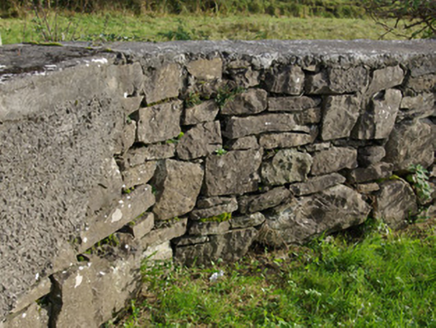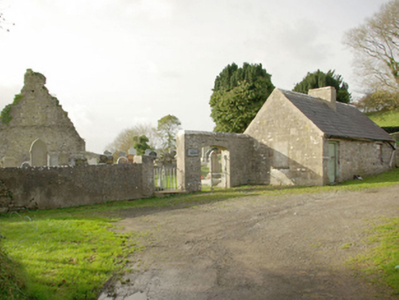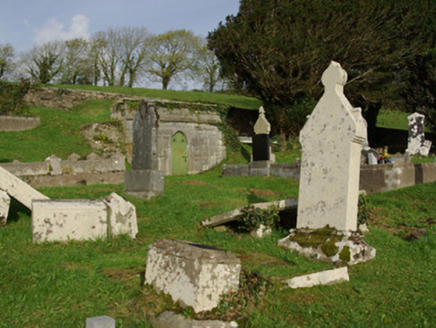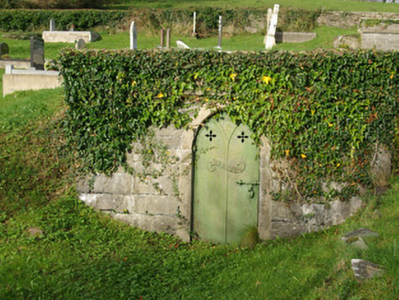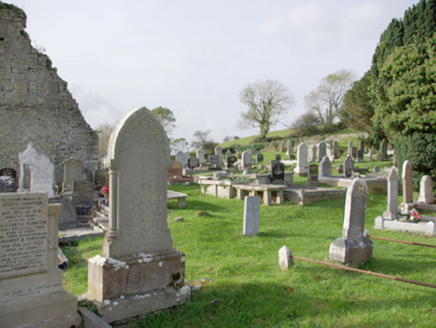Survey Data
Reg No
40910329
Rating
Regional
Categories of Special Interest
Architectural, Social
Original Use
Graveyard/cemetery
Date
1600 - 1800
Coordinates
189781, 371201
Date Recorded
15/12/2011
Date Updated
--/--/--
Description
Graveyard on irregular five-sided plan, built c. 1800, containing collection of mainly nineteenth and twentieth-century gravemarkers of upstanding, table and recumbent types. Metal railing guards to some gravemarkers. Hamilton family vault (see 40910327) to the north-west and Thompson family vault (see 40910328) to the south-east. Remains of former chapel (RMP DG103-002001-) to centre. Site surrounded by mainly rubble stone boundary walls. Gateway to the north-east comprising an integral segmental-headed carriage-arch set in section of rubble stone boundary wall having cut stone voussoirs to arch and with a pair of modern metal gates. Modern pedestrian turnstile adjacent to the south-east. Former sexton’s or caretaker’s house (see 40910326) adjacent to the north-west side of gateway. Located to the west of Ballintra close to the shores of Donegal Bay.
Appraisal
This interesting and quite picturesque graveyard contains an interesting collection of mainly nineteenth and twentieth-century gravemarkers of upstanding, recumbent and table-type markers. A number of the cut stone gravemarkers are of artistic merit, while the metal railed enclosures to a number of the gravemarkers adds additional interest. The graveyard also contains a pair of stylistically very similar family vaults/mausoleums, that to the north-west commemorating the Hamilton family (see 40910327) and that to the south-east commemorating the Thompson family (see 40910328). The centrepiece of the site is the remains of a former church ( RMP DG103-002001-), which was in existence in 1622 and remained in use until the construction of the Church of Ireland church at Ballintra in 1795. This site is probably the location of an early Medieval monastic site associated with St. Ernan. The site is entered through a gateway to the north-east which has fine stone voussoirs to the arch. The former sexton’s or caretakers house adjacent to the gateway completes the setting of this intersecting ensemble of related sites, which together represent an important element of the archaeological and architectural heritage of the local area, and of the social history of Drumhome.
